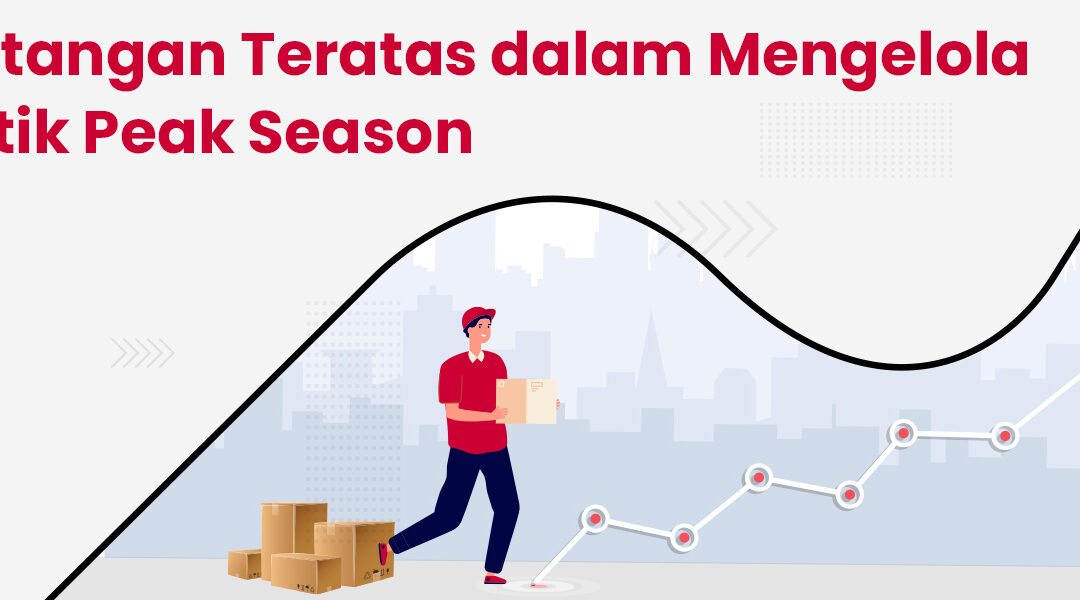Peak season logistics is one of the most challenging jobs for a supply chain manager. Effective peak season planning may be the difference between the success and failure of a company’s operations. Customer expectations have increased due to the boom in eCommerce and worldwide shipping. Logistics companies are concerned about the logistics constraints of the peak season.
Shippers must first understand the complexities of efficiently managing peak season logistics to realize enterprise benefits during peak seasons.
During the busiest times of the year, there is a need for high hauling capacities. In addition, the current peak season is also difficult for shippers due to market pressures such as the introduction of new tariffs and other difficulties, making planning even more complex. Consequently, shippers must understand the complexities of handling logistics during the 2021 peak season to achieve success.
Key Challenges in Managing Peak Season Logistics
1. Increase the Level of Consumer Engagement
The 2021 peak season is projected to be below the growth rate experienced in 2020. Nonetheless, good growth is expected as consumer activity increases year on year. Shipping companies and their transportation experts have to deal with this on a regular basis, even if the growth rate doesn’t exceed that of previous years. Increases in consumer income and sales provide new avenues for profit. However, with customers expecting free and fast delivery, shippers must do everything they can to meet demand while saving money on transportation. Because of this big logistical constraint happened.
2. Customers Want Faster Delivery Time
Logistics procedures need to be improved more than ever to meet customer expectations for faster delivery speeds like Amazon. It’s a dilemma that affects businesses of all sizes, as they compete with one another to stay ahead of Amazon. Most shippers don’t have the resources or economies of scale that companies like Amazon have to provide free, fast product delivery. As the holiday shopping season approaches, people will be more inclined to buy with Amazon than your company. According to logistics constraint management, 61% of respondents expect customer expectations to be greater this supply chain season than last year.
Because of this, shippers should think about this major issue as they get ready for the busy holiday season and develop the mentality for the perfect performance.
3. Due to Lack of Time to Review and Correct Incorrect Orders
Another major issue for senders these days is timeouts. During the busiest times of the year, shippers need as much time and resources as possible. Customer error is a shipper’s problem to fix, so make sure you get your order before checking out. In addition, shippers will be under increased pressure to handle peak season logistics efficiently as new data is added. As a result, the Transport Management System must be used by all freight forwarders (TMS). With TMS, shippers can maintain consistency while reducing the number of costly fulfillment errors.
4. Space Limitations in the Warehouse
Another issue on the minds of supply chain executives is resource availability. Due to shortage of warehouse space, customers have to turn to logistics service providers more frequently to fulfill their orders. Since there is not enough warehouse space, carriers are already under pressure from new shippers joining the global market with little or no resources.
5. WMS That Are More Than A Decade Old Or Do Not Integrate WMS and TMS
Customers who are already working with the supply chain should evaluate whether their warehouse management system (WMS) is up to date. Outdated systems slow down current organizational procedures. According to My Total Retail, a modern, cloud-based WMS improves fulfillment speed and agility. Providing end-to-end solutions that provide specific accountability throughout the supply chain will help shippers save costs and improve customer satisfaction with enhanced WMS.
If the TMS and WMS operations are not connected properly, other problems will arise. There is a problem where the WMS and TMS are not communicating. The inability to communicate data can lead to problems, and leaders in the supply chain will not improve supply chain operations in real-time. Failure to link WMS and TMS operations can exacerbate supply chain difficulties and degrade supply chain functionality, leading to a poor customer experience.
Automation and Transparency in Delivery is Increasingly Popular
Customers also expect increased automation in the shipping process. As merchants and logistics providers have pushed to automate procedures that provide efficient shipping options, customer expectations have increased. As a result, shippers must strive to offer prompt and proactive delivery in addition to fulfilling orders and ensuring they arrive on time. In the case of automated tracking alerts, shippers must choose a solution that gives consumers real-time access to the status of their shipments. Even in B2B transactions, companies need to pay attention to the real-time status of shipments to stay aware of potential problems.
Use Advanced, Automated TMS to Overcome Peak Season Logistics Barriers
Logistical constraints during the busiest time of year are evident in logistics companies. In the months leading up to the peak season, shippers and LSPs devise elaborate methods to meet their customers’ demands. However, unexpected problems still appeared. So instead of just hoping for a better year ahead, be sure to identify your flaws and work on improving them.


